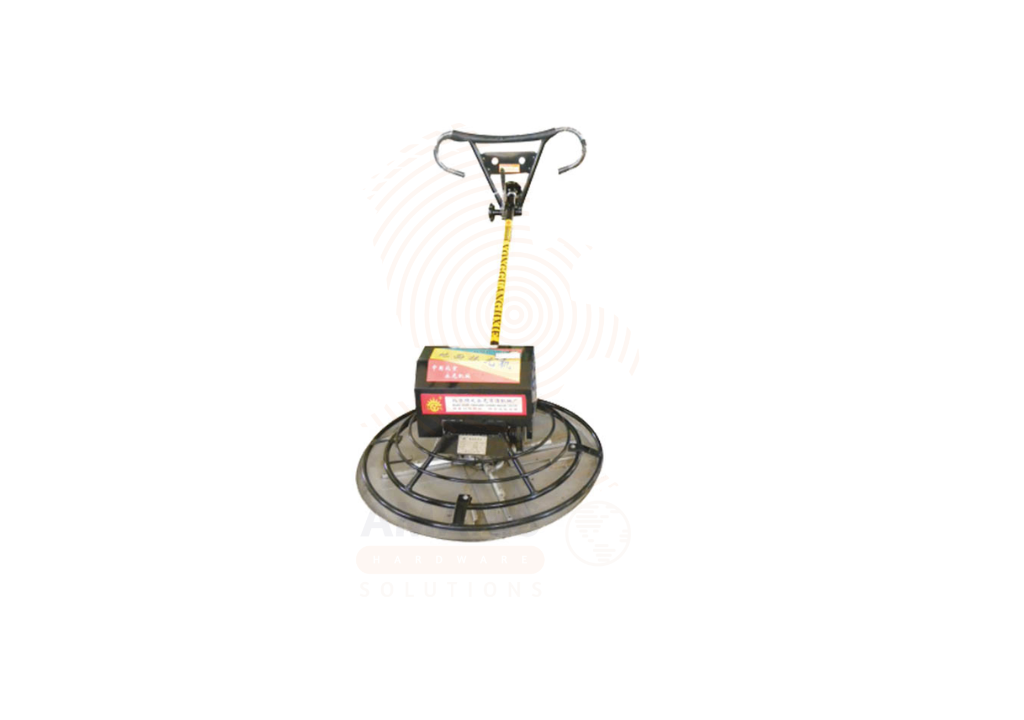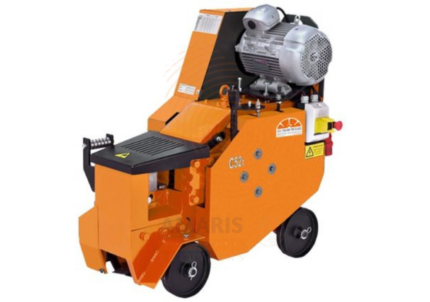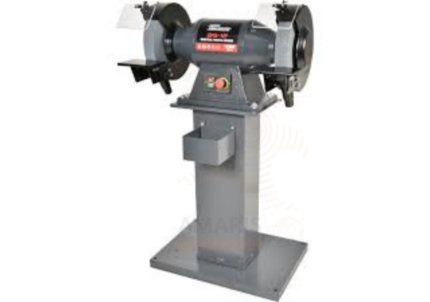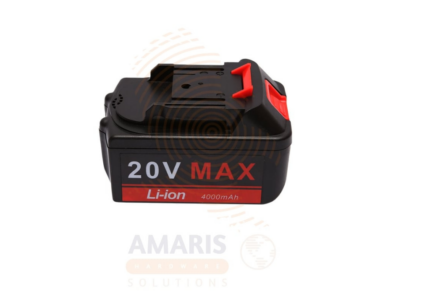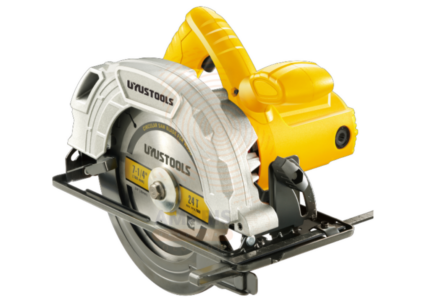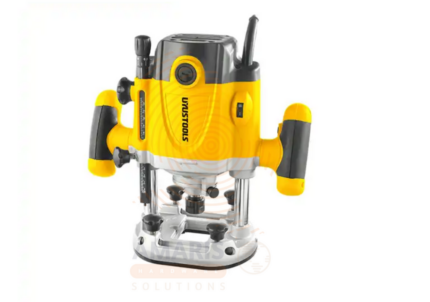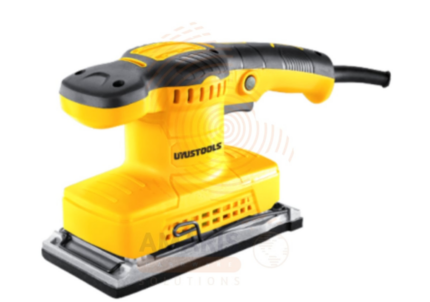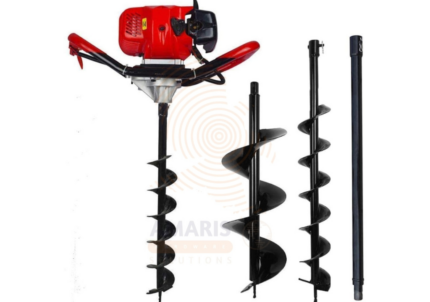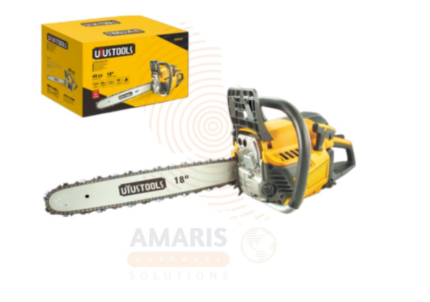Pavement Trowelling
WhatsApp Order
Pavement Trowelling refers to the process of smoothing, finishing, and compacting freshly poured concrete or cement surfaces using a trowel machine—also known as a power trowel or concrete float. This equipment uses rotating blades mounted on a frame (ride-on or walk-behind) to level and polish concrete surfaces, typically in pavements, industrial floors, and large slabs. It enhances the surface strength, appearance, and durability by closing surface pores and bringing fine materials to the top. Pavement trowelling ensures a flat, professional finish that resists wear, dust, and water.
Description
Table of Contents
TogglePavement Trowelling
Uses
-
Concrete Pavement Finishing
o Smooths and levels fresh concrete on roads, walkways, parking areas, and driveways.
o Ensures an even, skid-resistant finish for public and industrial use. -
Industrial Flooring
o Produces dense, wear-resistant surfaces for factories, warehouses, and commercial spaces.
o Prepares the concrete for coatings or treatments. -
Slab and Foundation Work
o Finishes large concrete slabs for residential or commercial buildings.
o Improves flatness tolerance for flooring systems. -
Airports and Runways
o Used in constructing smooth, durable concrete surfaces on airfields and taxiways. -
Bridge Decks and Infrastructure
o Finishes concrete elements of bridges, flyovers, and heavy-duty infrastructure projects. -
Warehouse and Loading Bay Construction
o Delivers level concrete surfaces to support forklifts and heavy material handling. -
Decorative Concrete Finishing
o Supports stamped or polished concrete processes by properly preparing the surface. -
Precast Slab Production
o Used in controlled environments to finish precast concrete panels and slabs before curing. -
Road Repair and Overlay Work
o Smooths concrete overlays in pavement maintenance and rehabilitation works.
SAFETY HANDLING PRECAUTIONS
Safety Precautions
-
Wear Personal Protective Equipment (PPE)
o Use goggles, gloves, steel-toe boots, and hearing protection during operation.
o Wear dust masks if operating in dry or enclosed environments. -
Inspect Equipment Before Use
o Check blades, belts, fuel, and engine components for wear or damage.
o Ensure guards and controls are functioning properly. -
Use Proper Operating Technique
o Keep both hands on the handles or controls.
o Do not operate over edges or unfinished areas without support. -
Avoid Loose Clothing
o Wear fitted workwear to prevent entanglement with rotating blades. -
Operate on Flat, Stable Concrete
o Only use when the concrete has set enough to support the machine’s weight.
o Avoid operating on overly wet or dry surfaces. -
Fuel Safety
o Turn off and cool the engine before refueling gas or diesel-powered models.
o Store fuel safely and away from open flames. -
Watch for Overheating or Vibration
o Pause if the machine vibrates excessively or emits unusual sounds.
o Regularly maintain bearings, blades, and engine parts. -
Maintain a Safe Work Area
o Keep bystanders, tools, and debris out of the operating zone.
o Use warning signs in public or shared workspaces. -
Training and Familiarity
o Only trained personnel should operate power trowels.
o Read and follow the manufacturer’s guidelines for setup and operation.
Related products
Big Battery Pro
A " Big Battery Pro" typically refers to a rechargeable lithium-ion battery with a nominal voltage of 20 volts. The nominal voltage represents the average voltage output over the majority of the battery's discharge cycle. It's important to note that the actual voltage during use may fluctuate within a specified range.
These batteries are commonly used to power various devices, including power tools, garden equipment, and other portable electronic devices. The "20V" designation is a standardized measure indicating the electrical potential of the battery, providing a general indication of its power output.
Keep in mind that when considering a 20V battery, it's essential to verify compatibility with the specific device or tool it is intended for. Additionally, different manufacturers may have variations in the actual voltage, capacity, and features of their 20V battery products. Checking the product documentation or contacting the manufacturer for detailed specifications is recommended for accurate information.
Circular Saw
A circular saw is a power tool equipped with a rotating circular blade, typically with teeth along its edge, designed for cutting various materials such as wood, plastic, metal, or masonry. It is commonly used in carpentry, construction, and other applications to make straight or beveled cuts with precision and efficiency. The circular saw is versatile and can be handheld or mounted on a table or other stationary surface, depending on the specific model and intended use.
Electric Router
An electric router is a power tool used in woodworking and carpentry for hollowing out an area or creating a specific profile on the edge of a material, typically wood. It operates by spinning a cutting tool or bit at high speeds, allowing for precise and controlled removal of material. Electric routers are versatile tools and can be equipped with various bits to perform tasks such as shaping, grooving, trimming, and forming decorative edges. They are widely employed in both professional and DIY settings for tasks that require accurate and intricate detailing in woodworking projects.
Finishing Sander
The finishing sander is a high-performance power tool designed to deliver smooth, even surfaces on wood, metal, or painted materials. Its ergonomic design allows for comfortable handling during extended use, while its powerful motor ensures consistent sanding performance. Perfect for removing minor imperfections, preparing surfaces for paint or varnish, and achieving a professional-quality finish, this tool is ideal for carpenters, woodworkers, DIY enthusiasts, and home improvement projects. The finishing sander is compatible with a variety of sanding pads and accessories, making it versatile for different applications and finishing requirements.
Forstner Drill Bits
PRODUCT DESCRIPTION
A Forstner drill bit is a specialized cutting tool used in woodworking to create flat-bottomed holes with smooth sides. Unlike traditional twist or spade drill bits, Forstner bits are characterized by a cylindrical shape with a flat bottom and a rim that cuts the perimeter of the hole. These bits are well-suited for precision drilling tasks, such as creating boreholes for dowels or hinge cups, as they produce clean and accurate results, minimizing tear-out and splintering in the wood. Forstner drill bits are commonly used in cabinetry, furniture making, and other woodworking applications where precise and clean hole drilling is essential.
Gasoline Auger Machine
A gasoline auger machine is a power tool designed for drilling holes in the ground using a rotating helical screw blade, commonly known as an auger. Unlike electric or manual augers, a gasoline auger machine is powered by a gasoline engine, providing greater mobility and independence from electrical power sources. This type of machine is commonly used in construction, landscaping, and agriculture for tasks such as digging holes for fence posts, planting trees, or installing various types of foundations. The gasoline engine provides the necessary power to turn the auger bit efficiently, making it suitable for heavy-duty and remote applications where access to electricity may be limited.
Gasoline Chain Saw
A Gasoline Chain Saw is a portable, mechanical cutting tool powered by an internal combustion engine that runs on gasoline. It typically consists of a chain with teeth attached to a guide bar, driven by the engine, and is commonly used for tasks such as tree felling, limb pruning, and wood cutting. The gasoline engine provides the necessary power to drive the chain, making the chainsaw a versatile tool for various outdoor cutting applications.
Glass Drill Set Hexagonal Handle
PRODUCT DESCRIPTION
A glass drill set with hexagonal handles typically refers to a collection of five drill bits specifically designed for drilling holes in glass surfaces. The term "hexagonal handle" indicates that the shank of each drill bit has a hexagonal (six-sided) shape, which can provide a better grip and prevent slipping when used with a compatible drill. These drill bits are specifically crafted for working with glass materials, offering precision and minimizing the risk of cracking or damaging the glass during the drilling process. The set may include different-sized bits to accommodate various hole diameters.


 Acrylic Sealants
Acrylic Sealants Construction Adhesives
Construction Adhesives Double-Sided Tape
Double-Sided Tape Duct Tape
Duct Tape Electrical Tape
Electrical Tape Epoxy & Resins
Epoxy & Resins Masking Tape
Masking Tape
 Automotive Wrenches & Socket Sets
Automotive Wrenches & Socket Sets Battery Chargers & Jump Starters
Battery Chargers & Jump Starters Car Jacks & Stands
Car Jacks & Stands Car Wash & Detailing Products
Car Wash & Detailing Products Diagnostic Tools
Diagnostic Tools Tire Inflators
Tire Inflators Vehicle Lighting
Vehicle Lighting Oil & Lubricants
Oil & Lubricants
 Adhesives & Sealants
Adhesives & Sealants Bricks & Blocks
Bricks & Blocks Cement & Concrete
Cement & Concrete Drywall & Plaster
Drywall & Plaster Flooring (Tiles, Wood, Laminate)
Flooring (Tiles, Wood, Laminate) Lumber & Plywood
Lumber & Plywood Paints, Primers & Coatings
Paints, Primers & Coatings Insulation Materials
Insulation Materials Roofing Materials
Roofing Materials
 Circuit Breakers
Circuit Breakers Electrical Cables & Wires
Electrical Cables & Wires Switches & Sockets
Switches & Sockets Fuses & Relays
Fuses & Relays Connectors & Terminals
Connectors & Terminals Electrical Boxes & Panels
Electrical Boxes & Panels Conduit & Fittings
Conduit & Fittings Lighting Fixtures & Bulbs
Lighting Fixtures & Bulbs Extension Cords & Power Strips
Extension Cords & Power Strips
 Anchors
Anchors Bolts
Bolts Clips & Clamps
Clips & Clamps Screws
Screws Nuts
Nuts Washers
Washers Rivets
Rivets Nails
Nails Threaded Rods
Threaded Rods
 Hammers
Hammers Measuring Tools (Tapes, Levels, Calipers)
Measuring Tools (Tapes, Levels, Calipers) Screwdrivers
Screwdrivers Pliers & Cutters
Pliers & Cutters Saws & Blades
Saws & Blades Chisels & Punches
Chisels & Punches Allen Keys & Hex Keys
Allen Keys & Hex Keys Ratchets & Socket Sets
Ratchets & Socket Sets Wrenches & Spanners
Wrenches & Spanners
 Power Tool Accessories (Blades, Bits, Discs)
Power Tool Accessories (Blades, Bits, Discs) Rotary Tools
Rotary Tools Saws (Circular, Jigsaw, Reciprocating)
Saws (Circular, Jigsaw, Reciprocating) Drills & Drivers
Drills & Drivers Grinders & Sanders
Grinders & Sanders Heat Guns
Heat Guns Nail Guns
Nail Guns Impact Wrenches
Impact Wrenches Batteries & Chargers
Batteries & Chargers
 Pipes & Fittings (PVC, Copper, PEX)
Pipes & Fittings (PVC, Copper, PEX) Plumbing Tools
Plumbing Tools Pumps & Motors
Pumps & Motors Sealants & Adhesives for Plumbing
Sealants & Adhesives for Plumbing Valves & Taps
Valves & Taps Water Heaters
Water Heaters Drainage Systems
Drainage Systems Faucets & Fixtures
Faucets & Fixtures Hoses & Tubing
Hoses & Tubing
 Hinges & Latches
Hinges & Latches Hooks & Brackets
Hooks & Brackets Window Hardware
Window Hardware Chains & Cables
Chains & Cables Casters & Wheels
Casters & Wheels Shelving & Storage Systems
Shelving & Storage Systems Door Handles & Locks
Door Handles & Locks Drawer Slides & Cabinet Hardware
Drawer Slides & Cabinet Hardware
 Personal Protective Equipment (PPE)
Personal Protective Equipment (PPE) Respirators & Masks
Respirators & Masks Safety Glasses
Safety Glasses Safes
Safes Security Cameras
Security Cameras Gloves
Gloves Helmets
Helmets Ear Protection
Ear Protection Fire Safety Equipment
Fire Safety Equipment Locks & Padlocks
Locks & Padlocks Motion Sensors & Alarms
Motion Sensors & Alarms
 Garden Fencing
Garden Fencing Garden Furniture Hardware
Garden Furniture Hardware Lawn Mowers
Lawn Mowers Trimmers & Edgers
Trimmers & Edgers Shovels & Spades
Shovels & Spades Rakes & Hoes
Rakes & Hoes Pruning Shears & Loppers
Pruning Shears & Loppers Watering Systems (Hoses, Sprinklers, Nozzles)
Watering Systems (Hoses, Sprinklers, Nozzles)
 Interior Paints
Interior Paints Paint Brushes & Rollers
Paint Brushes & Rollers Paint Strippers & Thinners
Paint Strippers & Thinners Paint Trays & Accessories
Paint Trays & Accessories Exterior Paints
Exterior Paints Spray Paints
Spray Paints Primers & Undercoats
Primers & Undercoats Varnishes & Stains
Varnishes & Stains
 Gaskets & Seals
Gaskets & Seals Hydraulic Fittings
Hydraulic Fittings Industrial Fasteners
Industrial Fasteners Industrial Hoses
Industrial Hoses Lubricants & Greases
Lubricants & Greases Metal Sheets & Bars
Metal Sheets & Bars Bearings & Bushings
Bearings & Bushings Belts & Pulleys
Belts & Pulleys
 HVAC Filters
HVAC Filters Insulation for HVAC
Insulation for HVAC Air Conditioners
Air Conditioners Refrigerants
Refrigerants Ventilation Ducts & Fittings
Ventilation Ducts & Fittings Thermostats & Controllers
Thermostats & Controllers Fans & Blowers
Fans & Blowers
 Pegboards & Hooks
Pegboards & Hooks Shelving Units
Shelving Units Storage Bins & Containers
Storage Bins & Containers Toolboxes & Tool Chests
Toolboxes & Tool Chests Workbenches
Workbenches Drawer Organizers
Drawer Organizers Labeling Supplies
Labeling Supplies
 Welding Accessories (Clamps, Brushes)
Welding Accessories (Clamps, Brushes) Welding Electrodes & Rods
Welding Electrodes & Rods Welding Helmets & Gloves
Welding Helmets & Gloves Welding Machines
Welding Machines Soldering Irons & Stations
Soldering Irons & Stations Flux & Solder Wire
Flux & Solder Wire
 Generator Accessories
Generator Accessories Inverters
Inverters Portable Generators
Portable Generators Power Inverters
Power Inverters Transfer Switches
Transfer Switches Diesel & Gasoline Generators
Diesel & Gasoline Generators
 Transport Equipment: Carts, Dollies, and Hand Trucks
Transport Equipment: Carts, Dollies, and Hand Trucks Storage Solutions: Pallets, Racks, and Containers
Storage Solutions: Pallets, Racks, and Containers Lifting Equipment: Hoists, Cranes, and Jacks
Lifting Equipment: Hoists, Cranes, and Jacks Conveyors and Accessories: Belts and Rollers
Conveyors and Accessories: Belts and Rollers